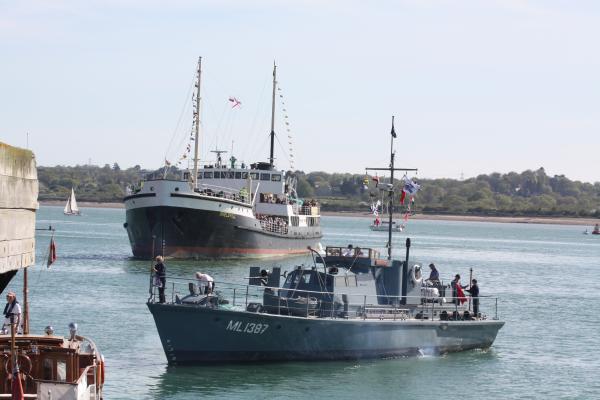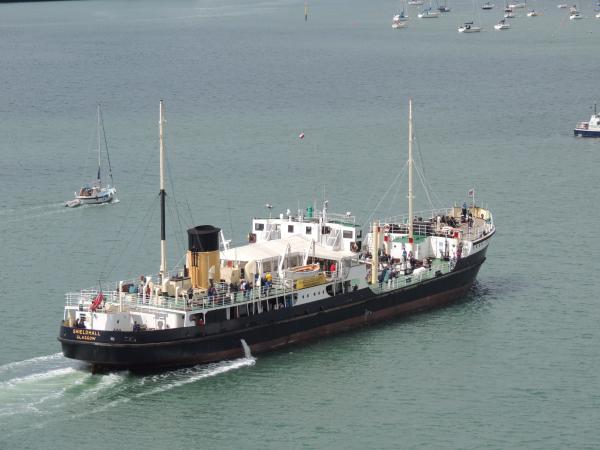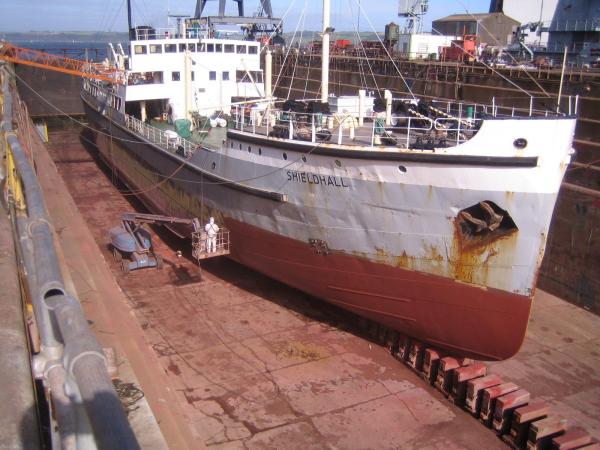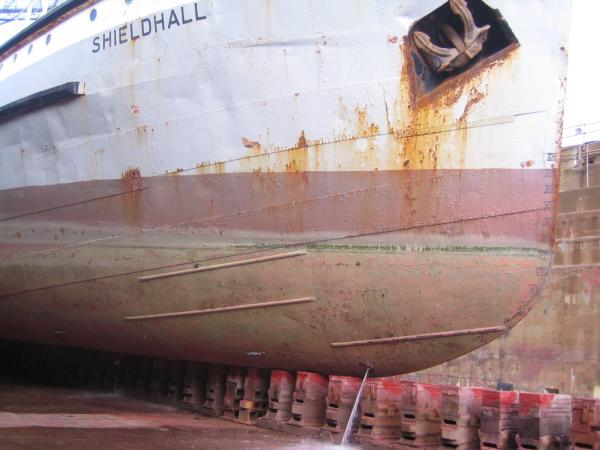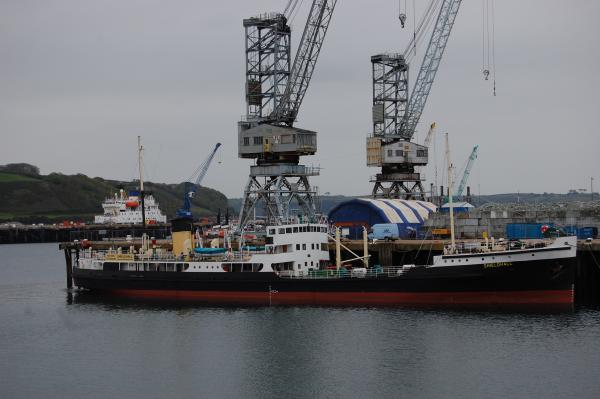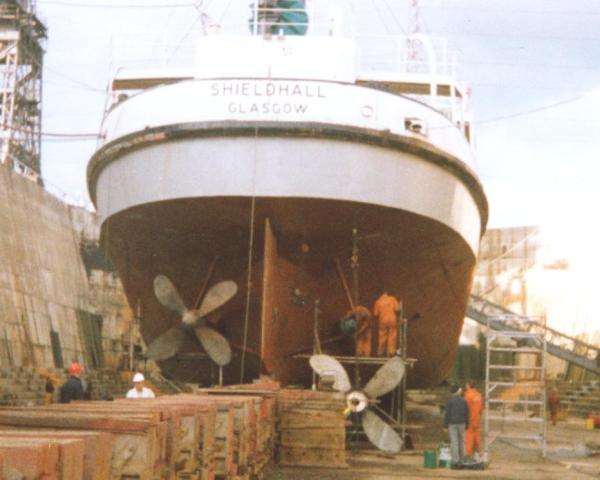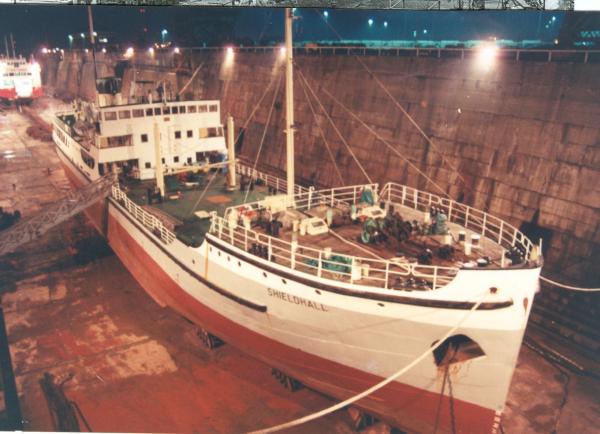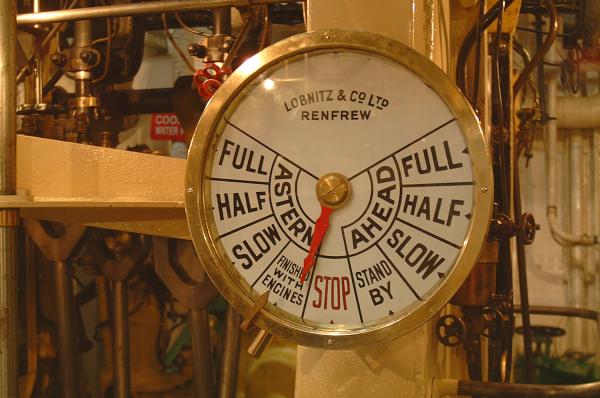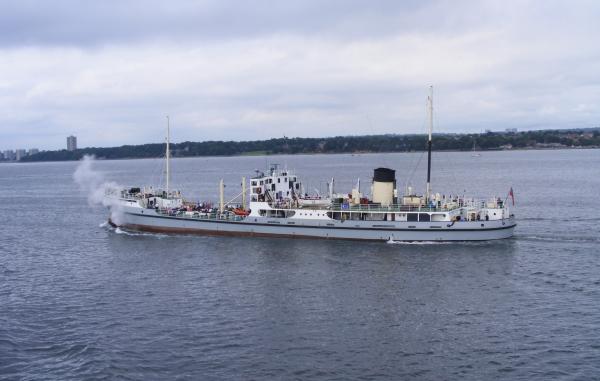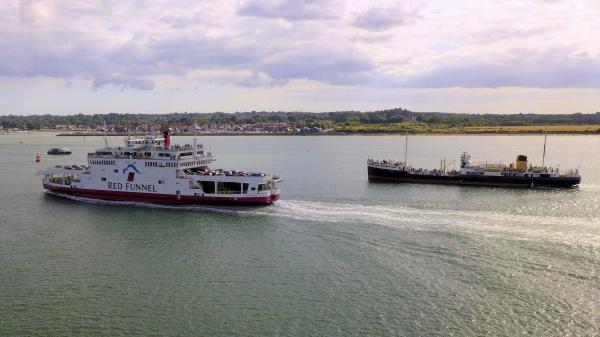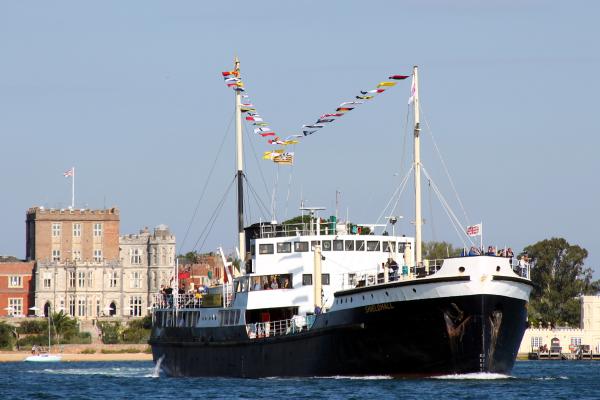

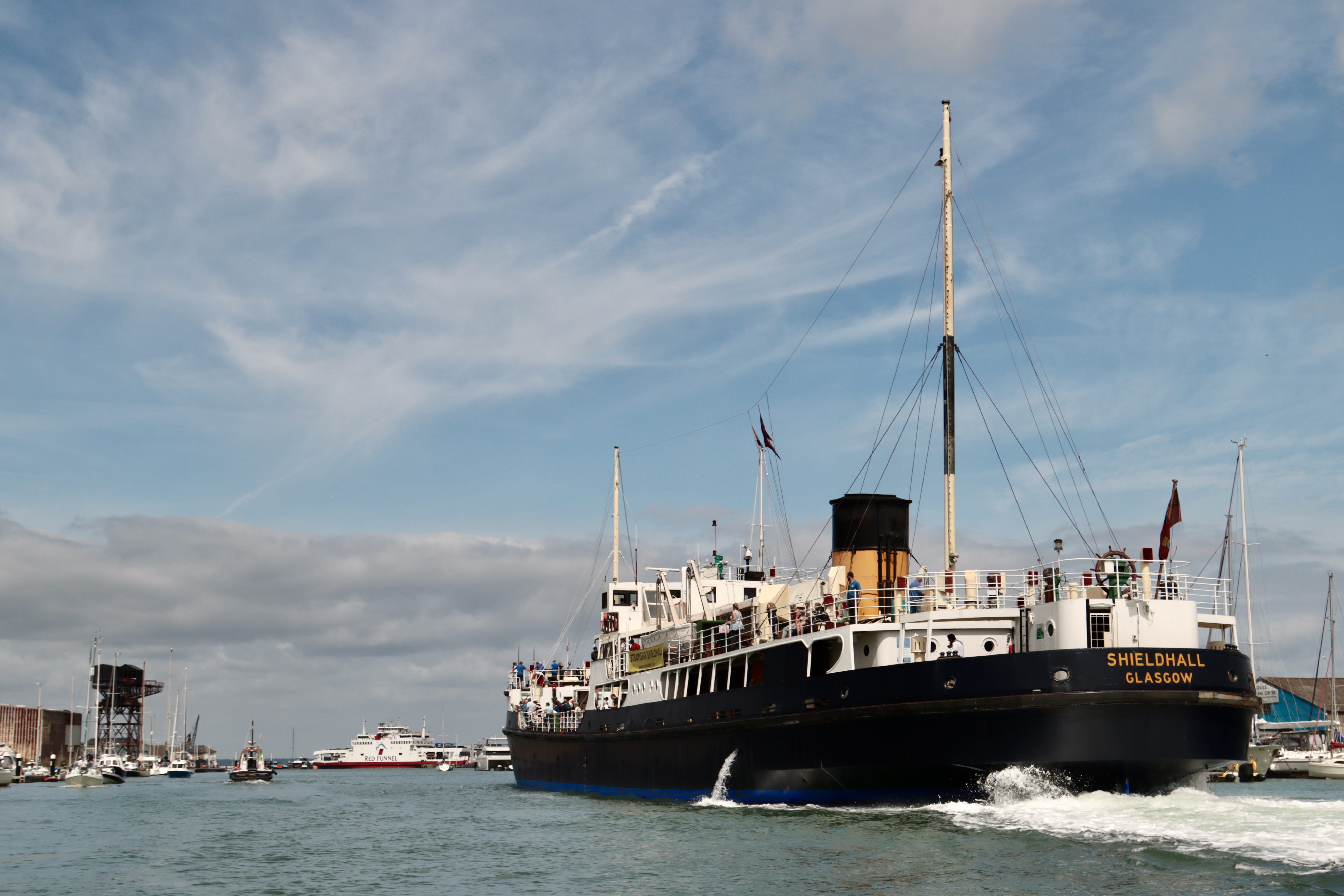
Details
Construction
Dimensions
History
SS SHIELDHALL was built for Glasgow Corporation as a sludge disposal vessel replacing an older namesake. She spent her working days moving treated sewage sludge from Shieldhall and Dalmuir down the River Clyde for disposal in the deeper waters around Garroch Head. These vessels had a long tradition of passenger carrying going back to the First World War when they used to take soldiers convalescing from their injuries on their runs to sea. Since that time all the ships, including SHIELDHALL, were fitted with comfortable accommodation and trips were provided mainly for disadvantaged people who otherwise would not have experienced a trip in a pleasure steamer. They were kept spotlessly clean with no trace of their humble task. SHIELDHALL was built on classic lines with a riveted and welded construction, a straight stem, cruiser stern and a traditional wheelhouse. She is fitted with two Scotch Boilers providing saturated steam to two triple expansion engines driving twin screws.
Normal operating speed was 9 knots with a maximum of 13 knots. She entered service in 1955 and operated on the Clyde until 1976 when she was replaced by the motorship SS GARROCH HEAD and laid up. In 1977 she was purchased by Southern Water Authority to carry sludge from Southampton for disposal in an area south of the Isle of Wight. In 1985, the rising cost of fuel made her uneconomical to run and she was withdrawn from service and again laid up. As a result of an initiative by the Southampton City Museum, a preservation society, The Solent Steam Packet Ltd, was formed and, in 1988, SHIELDHALL was purchased for £20K. All work on the ship was carried out by unpaid volunteers and much has been done to bring her up to and keep her in seagoing condition. In 2006, SHIELDHALL was awarded a grant of £275500 by the Heritage Lottery Fund to continue restoration and contribute towards extending her seagoing life by enabling her to remain fully operational and renewing the passenger carrying certificate.
Source; David Newberry, Committee Member, December 2008.
Significance
1. What is the vessel’s ability to demonstrate history in her physical fabric?
Built in 1955 by Lobnitz and Co in Renfrew Scotland, SHIELDHALL was designed as a ‘one off’ to meet specific customer requirements. She encapsulates the history of ship development, from technology that allowed steam to supplant sail at the turn of the 20th Century through to the transition in building methods from riveted to welded joints after the Second World War. SHIELDHALL is one of only a few remaining vessels able to demonstrate this material change with her superstructure and hull displaying both techniques according to her original build. Her boilers, two triple expansion steam engines and steering gear are of a similar configuration to earlier vessels, such as RMS TITANIC, and are original, as are the capstans, windlass and numerous auxiliary pumps which are powered by two oil fired scotch boilers. The Glasgow sludge fleet was unique in being certificated for passengers and SHIELDHALL’s passenger saloon represents a feature of social history, where a public asset was used for the public good. Under the ownership of Southern Water, it was converted to an Officers and Owners Saloon as evidenced by the partition between the Saloon and Bar area made by two doors in what was originally an open area. In 1978, the bridge wings were enclosed by Southern Water and a small deck house was added around the base of the foremast as a Bosun’s store. There were also some changes to the accommodation. These adaptations have been reversed in preservation where possible, albeit using modern, approved marine grade materials. Given her operational status, features such as high door sills and narrow doorways remain. In 2000, the timber rubbing strake was replaced with a composite rubber version of the same shape and form. The traditional deck caulking has been replaced by a modern alternative of a similar style which is more durable and effective to maintain. Steelwork is replaced when necessary to meet operational requirements. Conservation is ongoing, with interventions being reversible where possible in case the vessel should become a static exhibit at any future point.
2. What are the vessel’s associational links for which there is no physical evidence?
Commissioned by the Glasgow Corporation, SHIELDHALL was part of the passing scene on the Clyde, often known by the epithet of “Banana Boat”, more a reference to the colour scheme of the sludge ships than their trade. She has strong links to this area and, during a period of unrest in the shipbuilding industry, the Upper Clyde Shipbuilders had a ‘work-in’ rather than a strike, where a recording by a local folk group of the “Shieldhall Song” was used as an event to raise funds. Although built in the 1950s, the technology found in SHIELDHALL’s boilers and main engine dates from the late 19th Century and was widely used on merchant ships until the 1960s, with SHIELDHALL being one of the very few remaining vessels worldwide able to demonstrate its active use. SHIELDHALL’s associations with the Solent region stem from 1977 when she carried sewage sludge for Southern Water from Marchwood, Millbrook and Woolston to an area to the south of the Isle of Wight. After being bought by Solent Steam Packet Ltd in 1988, she remained in Southampton, operated by a volunteer crew. At the time of writing this statement, SHIELDHALL is believed to be the only passenger/cargo, twin screw, steam reciprocating engine, sea-going vessel that remains operational in the world, with other survivors being single screw or based on inland lakes. Photographs and documentation from her shipbuilders are retained in the Glasgow University Archives and the Glasgow Corporation. Archive material collected by the current owners resides in the Sea City Museum archives in Southampton. Many documentaries about SS TITANIC or the age of steam at sea have featured SHIELDHALL. She was recorded on the National Register of Historic Vessels in 1996 and given the status of inclusion in the National Historic Fleet. She was awarded Flagship of the Year twice by National Historic Ships UK in 2009 and 2018.
3. How does the vessel’s shape or form combine and contribute to her function?
SHIELDHALL was originally used by Glasgow Corporation to take treated sewage sludge to dumping grounds near the Firth of Clyde. She performed a similar task for Southern Water between 1980 and 1985, before being withdrawn from service because of rising fuel costs. The sludge ship was a hard-working vessel intended to operate both summer and winter, in all types of weather and sea conditions. The lower reaches of the Firth of Clyde experience heavy weather conditions during storms. As a result, the design of the high fo’c’sle was intended to provide a degree of shelter to the foredeck in bad weather and keep the crew accommodation largely dry. The large freeing ports in the bulwarks ensure that water cleared the decks quickly whilst the high door sills into the saloon and accommodation spaces provided a good degree of protection from the ingress of surface water. The ship was also twin screw to assist in manoeuvring in the narrow confines of the Clyde and the restricted approaches to wharves. SHIELDHALL’s design includes simple but efficient sewage discharge equipment which, from above decks, is not immediately apparent. SHIELDHALL remains in operational use in an area where she spent the latter half of her working life. She is open to the public throughout the season for cruises and events alongside. Located in the heart of the Docks, she provides visitors with a comprehensive view of operations there with vessels ranging in size from the largest container ships and cruise ships to the smallest ferries and pleasure craft.
Sources:
List the sources used in compiling this statement.
Glasgow University Archives
City Of Glasgow Corporation Archives
“The Shieldhall Story”, 1st and 2nd editions, author Graham Mackenzie
“From Dalmuir to Garroch Head”, authors Iain Quinn, Donald Robertson and David Stevenson
Key dates
-
1955
Built by Lobnitz & Co of Renfrew for Glasgow Corporation
-
1955-1976
Moved treated sewage sludge from Shieldhall and Dalmuir down the River Clyde for disposal in deeper waters around Garroch Head
-
1977
Purchased by Southern Water Authority
-
1977-1985
Carried sludge from Southampton for disposal in an area south of the Isle of Wight
-
1985
Withdrawn from service and laid up
-
1988
Solent Steam Packet Ltd company was formed and purchased the ship for £20K
-
1988-1991
Vessel fully restored for operational use
-
2009
Awarded National Historic Ships' Flagship of the Year.
-
2012
Took part in the commemorative events for the 100 year anniversary of the loss of the TITANIC and changed her hull colour to black
-
2018
Awarded National Historic Ships UK's Regional Flagship (Solent).
-
2018
Resilience grant from NLHF
Grants
-
2022
Awarded £200,000 Cultural Assets Fund grant ahead of 2022 dry dock and summer sailing season
-
April 2021
Steamship Shieldhall Charity received a grant of £61,200 from round 2 of the Government's Culture Recovery Fund.
-
2014
Headley Trust awarded £10,000 towards apprenticeship training
-
2011
A grant of £32,000 was given towards urgent steel and engineering works by The Headley Trust
-
December 2011
A grant of £32,000 has been awarded from The Headley Trust, which will go towards the repairs that we are currently undertaking to get the ship back to sea in April 2012
-
2011-2012
The Heritage Lottery Fund awarded £1,612,400 for a conservation project
-
June 2009
A Flagship of the Year Award of £1000 for a detachable canvas side was made from the Strategic Development Fund of National Historic Ships
-
2010
A Sustainability Award of £1250 for stability books was made from the Strategic Development Fund of National Historic Ships
-
October 2008
A Sustainability Grant of £2000 for the renovation of crew quarters was made from the Strategic Development Fund of National Historic Ships
-
2006-2007
The Heritage Lottery Fund awarded £279,500 to carry out conservation work
-
2001-2002
The Heritage Lottery Fund awarded £286,500 to enhance educational provisiosn to the public and to secure her future
Sources
Brouwer, Norman J,International Register of Historic Ships,
Anthony Nelson, pp173, Edition 2, 1993Steamboat Register: An illustrated Register of surviving steam vessels in the British Isles,
Steam Boat Association of Great Britain, Edition 6, May 1994 O'Hagen, Andrew,The Glasgow Sludge BoatsThe Atlantic Ocean - Essays on Britain and America,
Faber & Faber, 2008Classic Boat: Heritage Lottery Fund - SS Shieldhall in pp1000 award,
August 2012Ships Monthly: Preservation News: Bright future for Shieldhall,
December 1989 Ships Monthly: Shieldhall - Still in Steam,
April 1991Ships Monthly:Still in Steam - Shieldhall,
December 1982Transport Digest: Shieldhall beats scrapyard,
Summer Edition 103, 2011Ships Monthly: NHF Flagship,
November 2018
Own this vessel?
If you are the owner of this vessel and would like to provide more details or updated information, please contact info@nationalhistoricships.org.uk

